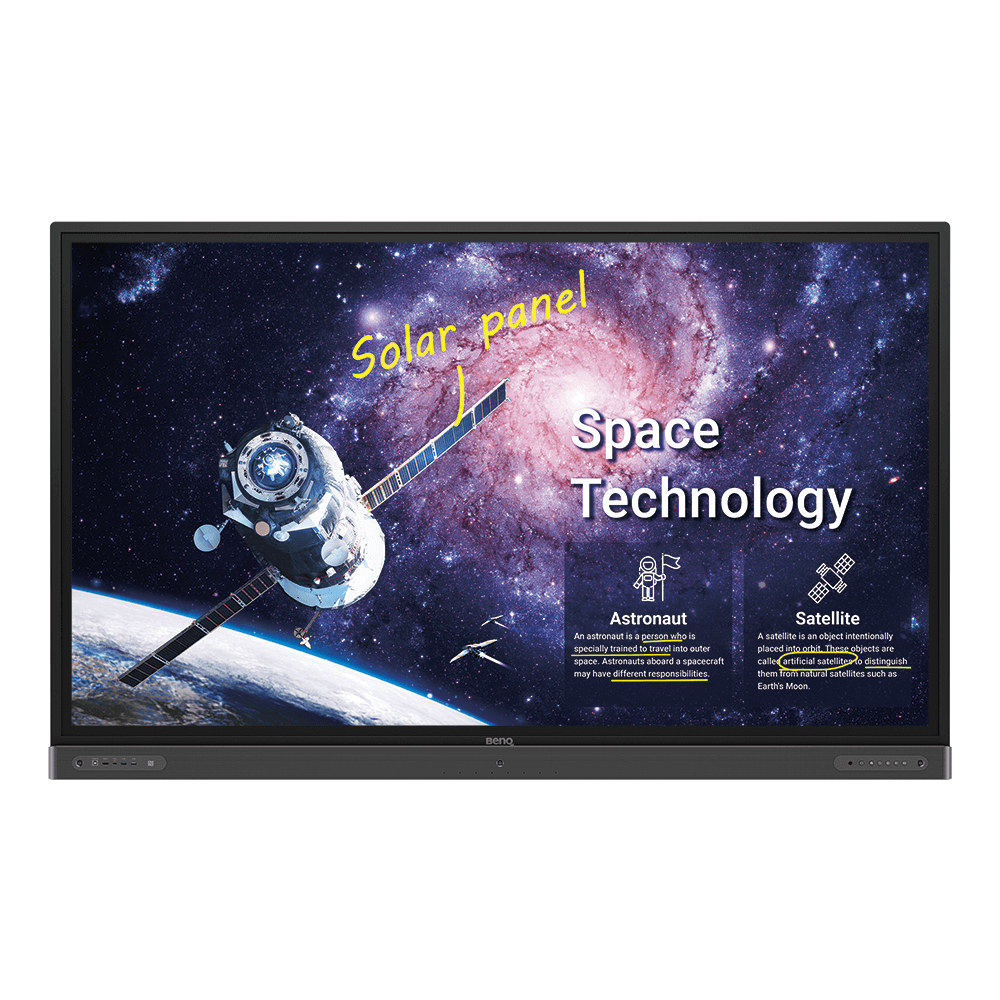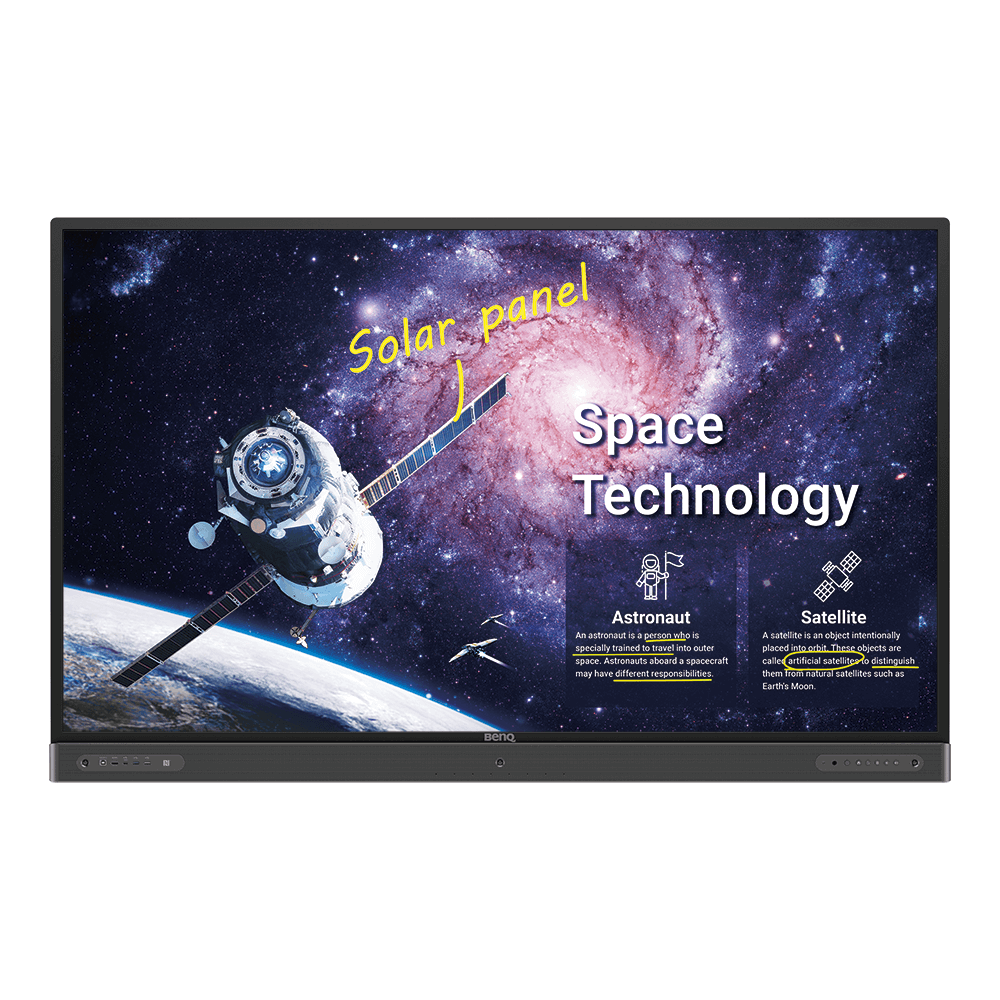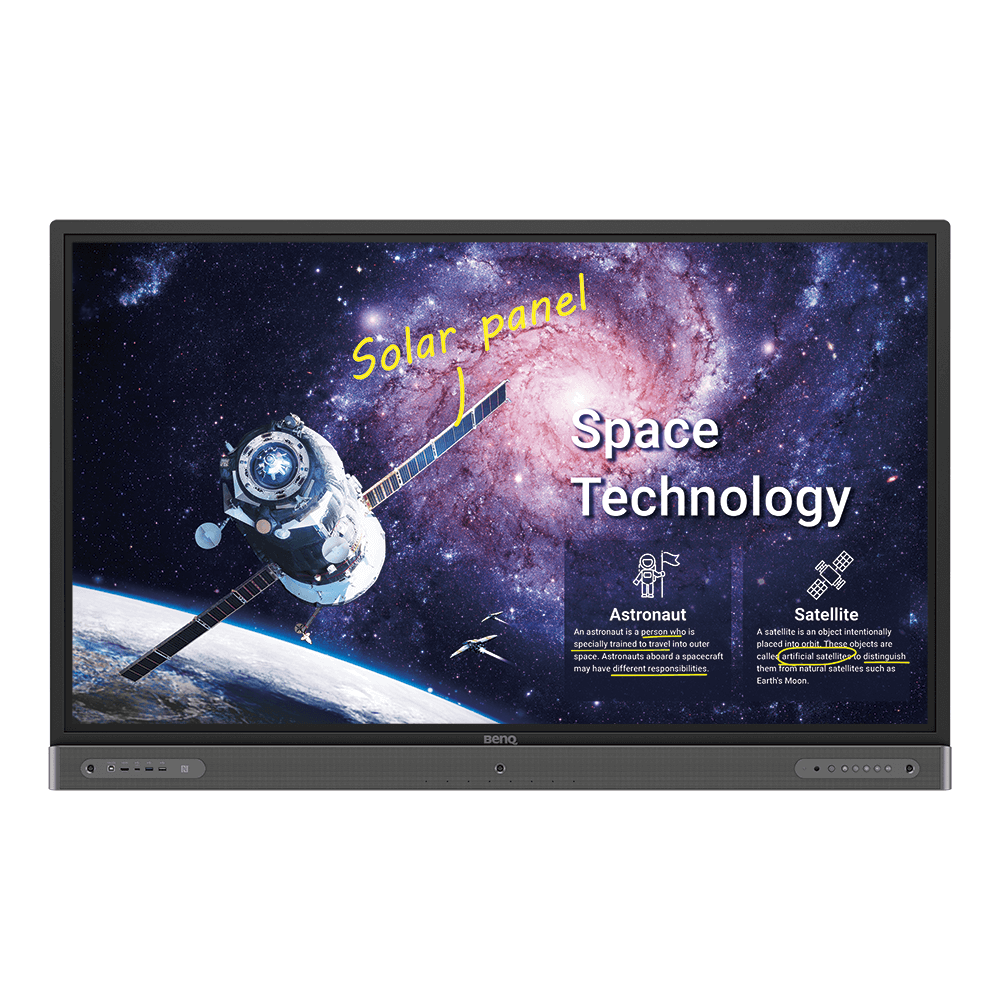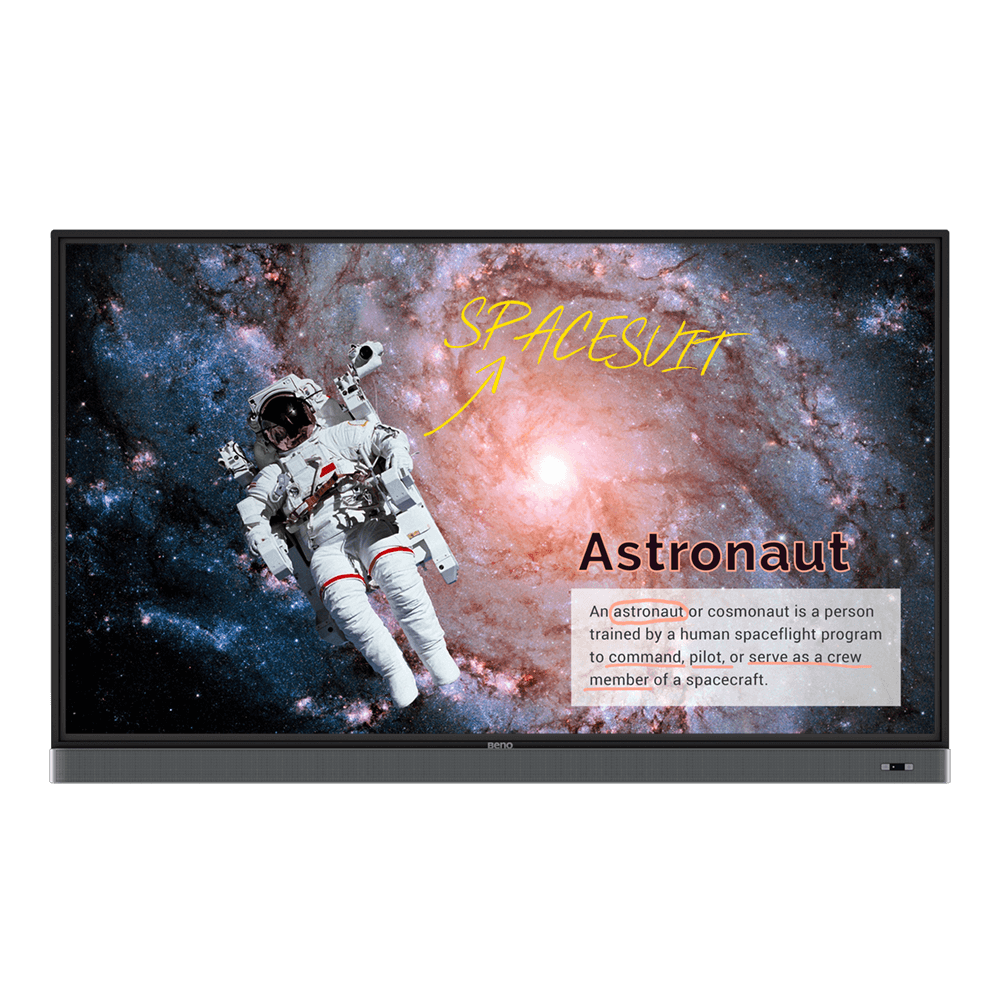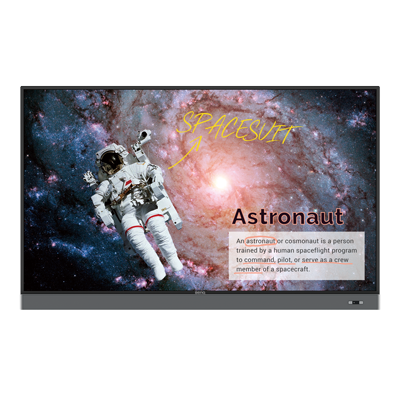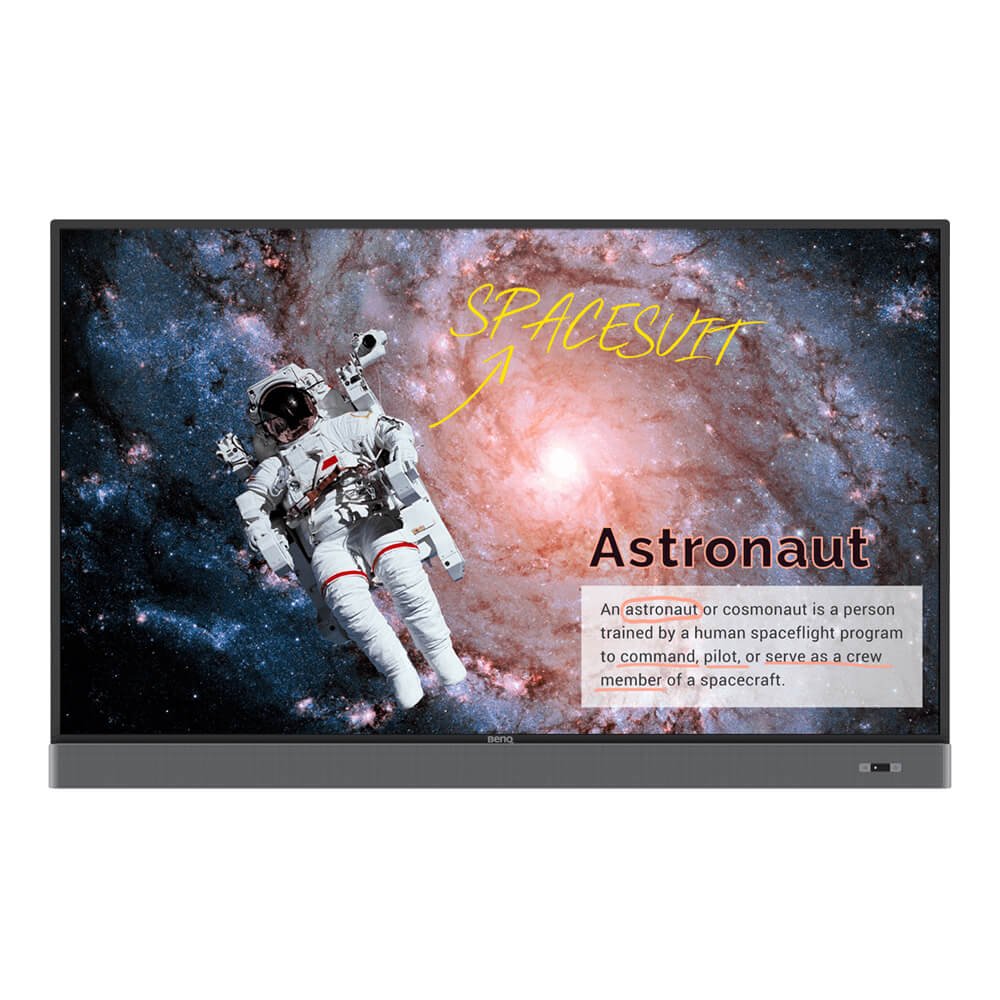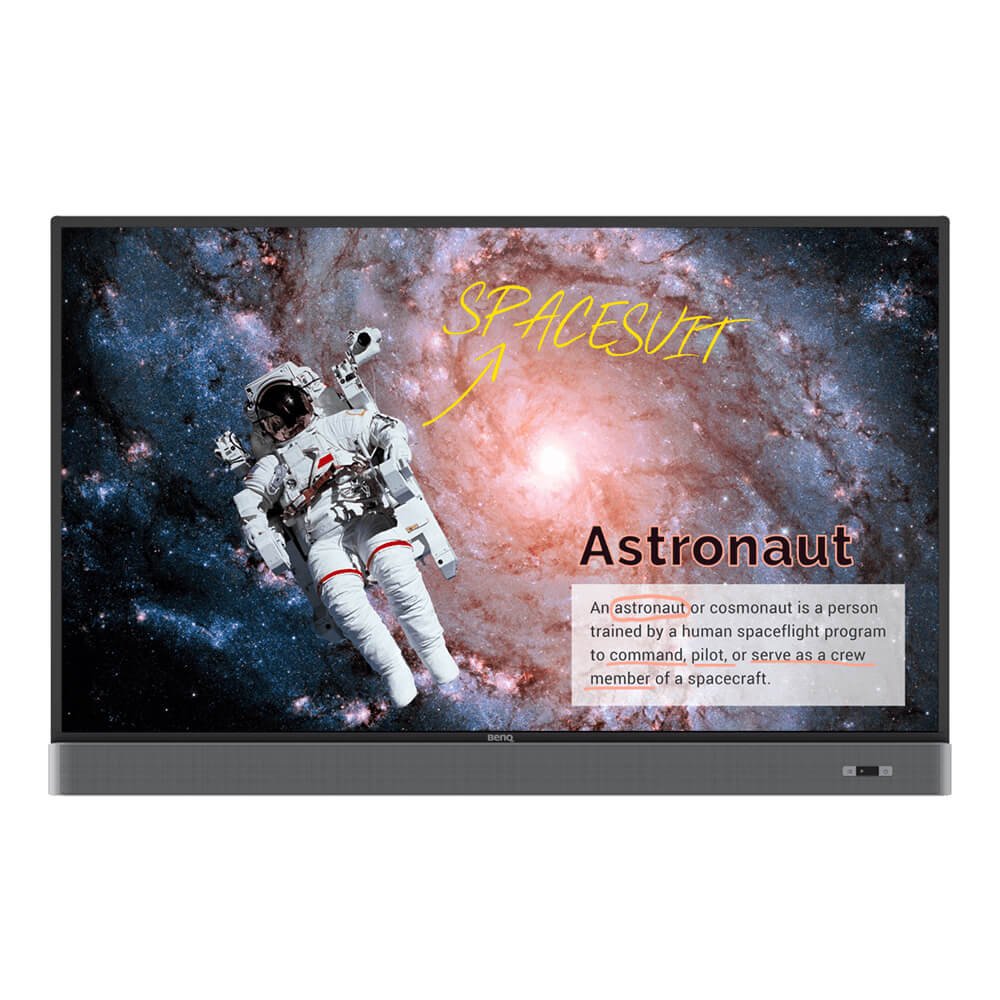Check 9 examples of fun, engaging math class activities that you can deliver with less effort, in a modern way with interactive displays from BenQ
8 Ideas for Fun Science Class Activities with BenQ Interactive Display
- Teacher Tips 'N Tricks
- Interactive Displays for Education
- 2022-01-19
If there is one clear direction the world is heading in, it’s technology. And there is no tech without science. Never have science classes been as important as they are these days.
To prepare your students for a tech-rich future, you need to make sure that the science education they are receiving is top-notch. Starting science education early, perhaps one of your students will grow up to be the next Newton? Or maybe some of the lessons you teach will give birth to a new Nicola Tesla?
Even the most capable mind doesn’t develop groundbreaking ideas without interest, however. Some say that it is your job as an educator to awaken kids’ passion for subjects and encourage self-study. And there is no better way to do so than kids associating science with fun.
This is a cause we stand behind. Our interactive displays help you engage your students and transform classrooms into fun learning spaces, all while teaching necessary knowledge and real-life skills in your enhanced science class.
Here are 8 fun, engaging science class activities examples that your students will love for the BenQ interactive board in your classroom
- Teach What Students Want to Know with Inquiry-Based Learning
- Replace Paper Handouts with On-Screen Worksheets
- Save Personal Time by Using Online Resources
- Safe Experiments Without Lab Equipment Clutter
- Real Life Experiments and Projects, Live Streamed
- Worldwide Experiences without Leaving the Classroom
- Gamified Science Learning
- Learning During Breaks
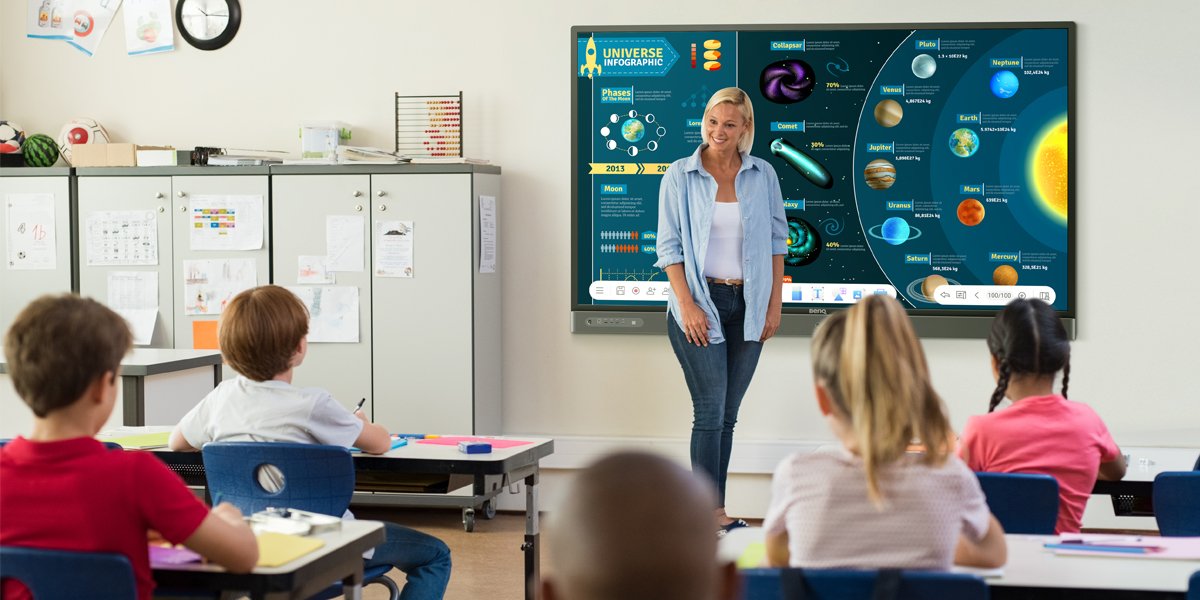
8 Examples of Fun, Engaging Science Class Activities for BenQ Interactive Displays
Teach What Students Want to Know with Inquiry-Based Learning
Let’s start with what exactly is inquiry-based learning (or IBL). According to Wikipedia, Inquiry-based learning is a form of active learning that starts by posing questions, problems or scenarios.
More than a buzzword, IBL is a great way to ensure that your students stay engaged and interested by covering topics that interest them and that they find useful. While can’t exactly tell you to completely reshuffle your curriculum and let students decide what the class is about all the time, reserving time in your lesson plan for IBL sessions is definitely a good idea.
BenQ interactive displays are a great way to foster this model of class. If you are also pushing in the direction of a flipped classroom, it’s super easy for your students to share what they’ve learnt at home.
Has a student watched an interesting video that they would like to share and discuss in class? Have them play it on their device and cast it to the BenQ interactive board via InstaShare. That can initiate a discussion.
Another idea is to assign a student per class to prepare a topic they are interested in discussing during the session. You can then simply write down the subject proposed by your student on the board in EZWrite, and enable collaboration mode. Divide your students into small groups, with a personal device in each, and have them discuss their ideas and brainstorm. By scanning the QR code or via meeting code that appears when you share the whiteboard, your students will join via their device's browser. They can then share the results of their discussion to the board via the sticky note tool or by editing the content of the whiteboard.
Perhaps you will be discussing dinosaurs, superheroes, and princesses, but some natural-born scientist might bring up topics like “how come we have clouds?” or “why is thunder so loud?”, which are great science-class topics.
Replace Paper Handouts with On-Screen Worksheets
Have you ever given a handout with a skeleton and blank spaces for students to write bone names in? Or perhaps a solar system model and blanks for the names of planets?
This can be done without paper (which brings an obvious benefit to the environment), and is more fun as the whole class can be involved at once.
Simply upload a suitable image you’ve found on the internet to EZWrite and have your students input their answers via sticky note mode from their own devices. A great place to find such images is Pinterest.
Alternatively, have your students come to the board one by one and write the correct names in the blank spaces with the BenQ pen.
To ensure you don’t accidentally favor or make some students feel picked-on, use the random number picker widget to choose the order in which students take turns.
Save Personal Time by Using Online Resources
Creation of teaching materials takes a good chunk of time. It’s probably not news to you that plenty of resources are available to use online. Some of them are simply good resources you can download. Others are awesome to use in-class. Some are both.
Most of these resources are easily accessible through a browser. To launch them, simply find the Firefox browser in the application list, find the address bar on the top of the screen, and type the address of the website you wish to visit via the on-screen keyboard, or paste the link from another source like Google Classroom (which can also be accessed via browser).
Alternatively, you can simply go to those websites on your computer, and cast the screen to the BenQ smart board either wirelessly via InstaShare or using an HDMI cable.
National Geographic Kids is an amazing website for teaching science. With plenty of materials and activities available through a browser, it’s a guarantee of fun and informative classes with top notch information and presentation. Wish to play a game and allow your students to put newly acquired knowledge into practice? It’s there. Want to show an interesting video about volcanos? Right there for you.
Similarly, Discovery Education has plenty of ready-to-use resources, and even teaching plans and calendars! Videos, games, virtual field trips, all in one place, easily accessible through your browser. And none require you to spend extra time at home, time you could really use to rest up.
Safe Experiments & Simulations Without Lab Equipment Clutter
Some experiments are so cool to see, but maybe not the safest around young children. Couple of explosive chemical reactions come to mind. You don’t need to give up on those completely!
BenQ displays allow you to show students experiments that someone else has completed in a safe, controlled environment. YouTube has countless videos of science experiments that you can play. Simply open YouTube in the browser, and play the videos.
Other websites specializing in simulations can help as well. Phet Interactive Simulations is a website that allows you to run simulated versions of various experiments in a way where you control input, making it much more interactive and engaging than simply watching a video. Let your students play around with parameters and see how the results change.
Real Life Experiments and Projects, Live Streamed
Some experiments or projects are safe in a classroom but perhaps the desk or where you conduct them isn’t big or visible enough, and having your students come up to watch isn’t convenient. A small crowd around your desk may also not be exactly great when thinking about the still-ongoing pandemic.
You can conduct chemistry experiments. Liquids changing colors or a desk-sized baking soda and vinegar volcano provide unforgettable school memories to your students and help get them interested in science.
You may choose to have your students put together a simple battery-powered electrical circuit by following your steps as you complete the task.
Good news is, you can show what you’re doing to your students closely, without them leaving their desk.
There are two ways to show real time work on screen. One, you can buy special document camera that will display whatever you are doing on your desk on the screen. You can simply plug such a camera to the BenQ interactive board via HDMI, change the input source to the appropriate one, and voila!
Alternatively, simply turn on your smartphone camera, cast the screen content to the display via InstaShare, and show what’s going on to your students on the big screen.
This is a great way to conduct chemistry experiments or lead your students in follow-along projects.
Worldwide Experiences without Leaving the Classroom via Virtual Field Trips
Is the Smithsonian a bit too far from your school for a day trip? Good news, this and many other famous museums and institutions offer online virtual tours. Some examples include the National Museum of Natural History, Virginia Air & Space Center, or even locations abroad like Museo Galileo in Italy!
This is not limited to museums, but also outdoor locations. Google Earth allows you to visit any place around the globe (with few exceptions) right from your board’s browser. Are you teaching about sand dunes? Show your students the Sahara in 3D. Want to show a volcano from above and demonstrate how it helps shape nearby terrain? Go to your selected volcano’s location in Google Earth (we hear Marum crater on the Vanuatuan island of Ambrym is quite a sight).
Gamified Science Learning
Teaching can be fun. Learning too. Chances are, your students are playing Fortnite after getting home, as gaming is what they enjoy. Why not do that in the classroom too? Well, not Fortnite, but plenty of other games you can play in class are a sure way to capture student attention and help them enjoy reviewing materials.
Are you teaching the periodic table? Breaking Atom is a browser-friendly site featuring everything about the elements, including an interactive game.
Quizzes and trivia are also a great way to learn new material and review already-covered topics. And there is no better quiz software than Kahoot!. Optimized for BenQ interactive displays, the app features its own, custom made quizzes as well as a rich library of curated games created by education experts, free for you to use. You can download Kahoot! from the BenQ App Store*.

* On certain devices, BenQ App Store can be found under name "BenQ Suggests"
Learning During Breaks
Interactive displays from BenQ feature a broadcasting functionality called X-Sign Broadcast. This unique software allows you to broadcast text messages and even videos, with an option to schedule your messages ahead of time!
Some of our clients choose to broadcast educational videos during recess for the students who choose to stay in the classroom.
You can ask your IT manager for help with scheduling your selected YouTube videos to play during breaktime. For other ideas on how to use X-Sign Broadcast, read this article.
Towards the Future and Beyond!
Awakening a passion for science in your students is not an easy task, but it can be super rewarding. Good news is, many of them already want to become a Tony Stark (or Iron Man) or the next Elon Musk. Now, you just need to start them on the right path.
We believe BenQ interactive displays are an amazing tool for science class. If you wish to learn what else these devices can do, click below and see all the benefits that they bring to your classroom, or see other tips and tricks we have for you to consider.
Teacher Tips 'N Tricks
-
Trends & Knowledge
[Teacher Tips 'N Trick] 9 Ideas for Fun Math Class Activities with BenQ Boards
2022.01.19 -
Trends & Knowledge
[Teacher Tips 'N Tricks] 4 Apps You Need to Start Using Now on Your BenQ Board
Here is a list of 4 must-have apps for interactive displays in your classroom that will reshape the way you teach and students learn
2021.09.02 -
Trends & Knowledge
[Teacher Tips 'N Tricks] 5 Websites You Should Be Using Now in Classrooms With BenQ Boards
See 5 examples of websites that can help you teach easier and more efficient and make classes unforgettable, directly from your BenQ Interactive Display
2021.12.03

